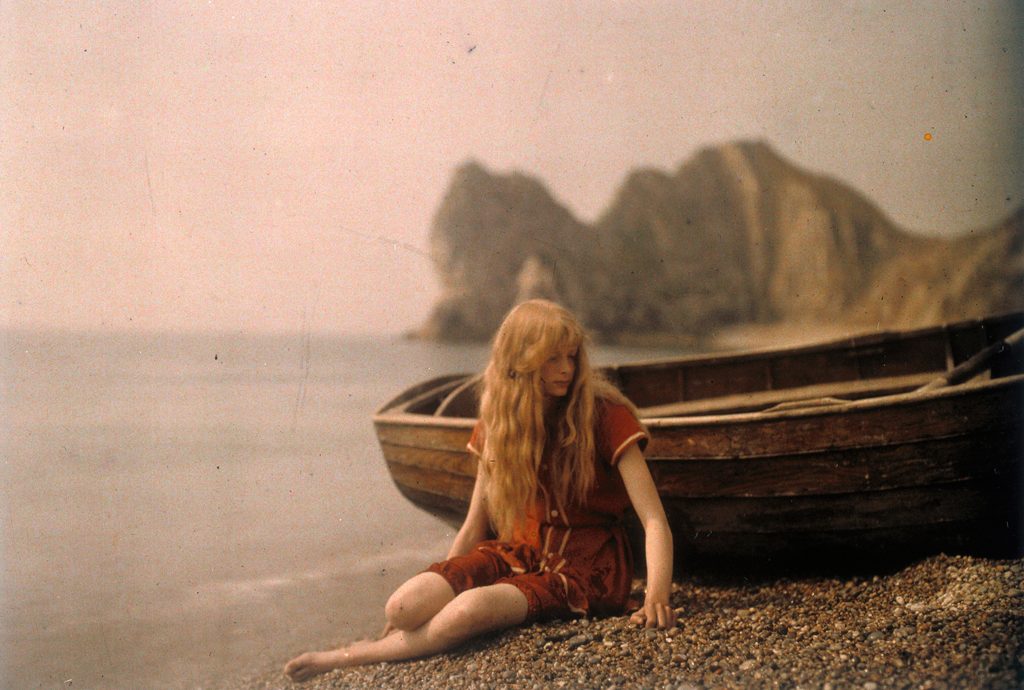
A Woman in Red: How Color Photography Began
The Era of Color
Experiments with color photography started back in the early 19th century. Back then they were performed by a few enthusiasts: the range of colors was limited, images turned out blurry, and you needed three cameras for shooting. While scientists studied the nature of light and were looking for ways to tame it, regular photographers employed artists who hand-painted black-and-white photographs.
The breakthrough happened when the Lumiere brothers developed Autochrome — the first relatively practical and commercially successful technology of creating color photographs. In 1907, the Lumiere brothers started manufacturing photo plates for color photography, thus starting its era.
Autochrome technology is based on using glass photo plates covered with potato starch, its transparent grains colored into three main colors: red, blue, and green. The ready plate is a three-color filter, with each square inch of it covered with 4 million grains of starch.
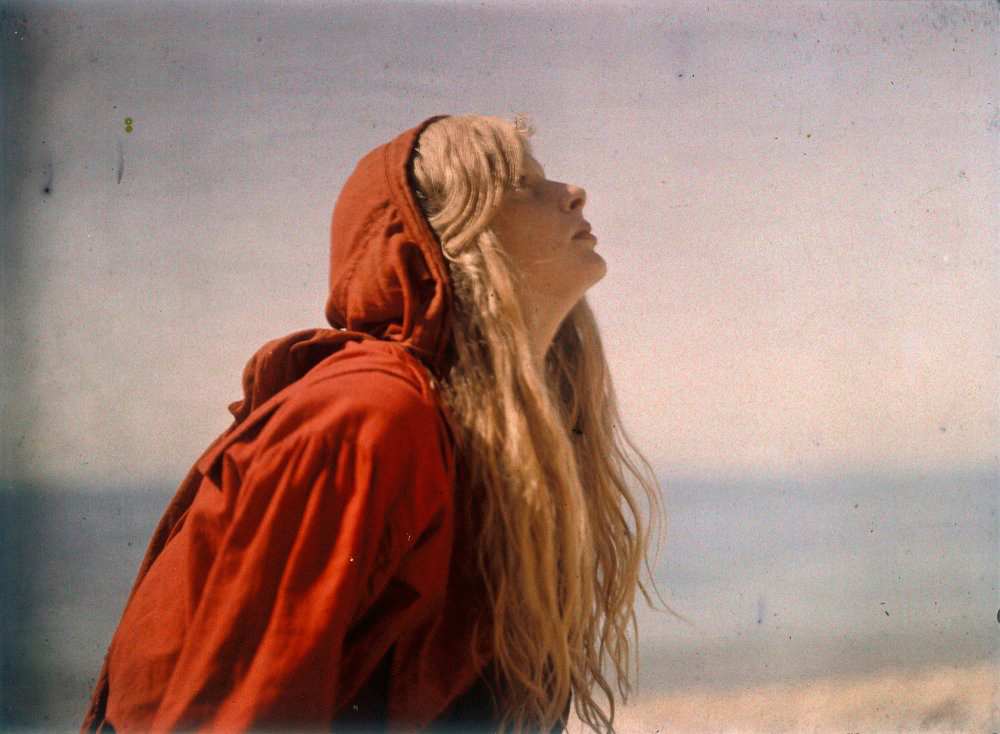
Christina in a red cloak, 1913. Photo: Royal Photographic Society Collection
Such plates were inserted into a regular camera, which made autochrome the first mass color photography technology. By 1913, the plant of the Lumiere brothers in Lyon manufactured six thousand different-sized plates a day.
Autochrome had one significant disadvantage: this technology did not allow for manipulating the image — the beauty of the shot depended mainly on the ability of the photographer to capture a perfect picture. In addition, shooting on autochrome indoors requires a long exposure, that’s why it is preferable to shoot in the street in natural light that changes quickly.
A Pioneer
Taking into account how much color photography has changed the world, it is surprising how little is known about the experiments of one of the pioneers of this genre — Mervyn O’Gorman. In the 21st century, the digital generation is surprised at the revelation of the color photographs that he took over 100 years ago. The experts knew about O’Gorman’s work, of course, but they had to spend years finding at least some information about the pictures.
Lieutenant-Colonel O’Gorman, an Irishman from Britain, wasn’t a professional photographer. He was an outstanding engineer and worked on creating the first British planes, he also made a noticeable contribution in drafting the first British traffic rules. He also had hobbies — writing poems, painting, and taking pictures.
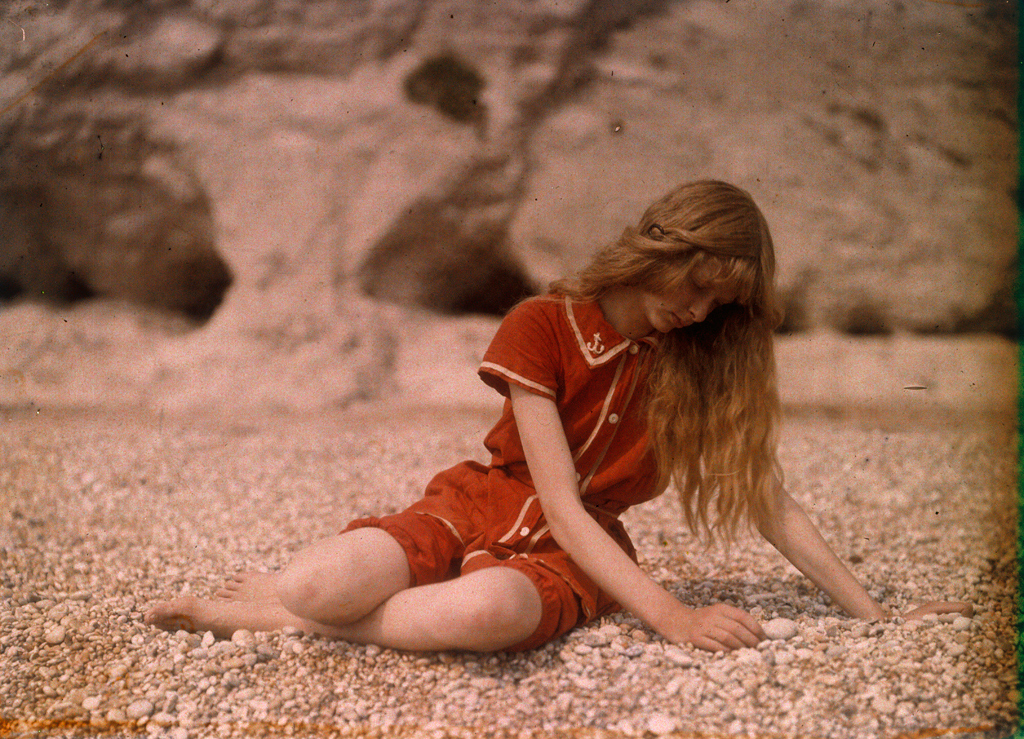
Christina on the beach, 1913. Photo: Royal Photographic Society Collection
In 1913, using autochrome O’Gorman created a series of portraits of a young blonde. In all of the photographs the young woman is dressed in red: a red swimsuit, a red blouse, a red cloak. It must have been the request of the photographer — when you use autochrome, the brightest colors turn out the best.
If you don’t know anything about these photographs, it is impossible to guess which decade they were taken. You could think the shoot took place in the 1950s, or 1960s, or 1970s. It’s not only about not having anything to signify the era in the frame: we only see a beach or a garden where a fair-haired young woman poses. It is also about the incredible artistic flair of a man who managed to create such perfect images using equipment that by contemporary standards was rather imperfect.
We also need to take into account that O’Gorman worked with photo plates (photo film wasn’t there yet), which means he practically had no room for error. It was in the later decades when film cameras were invented that photographers gained the opportunity to shoot a dozen or so similar photographs to choose the best of them later (I won’t even mention the volumes of memory accessible in the digital era). O’Gorman had but one try.
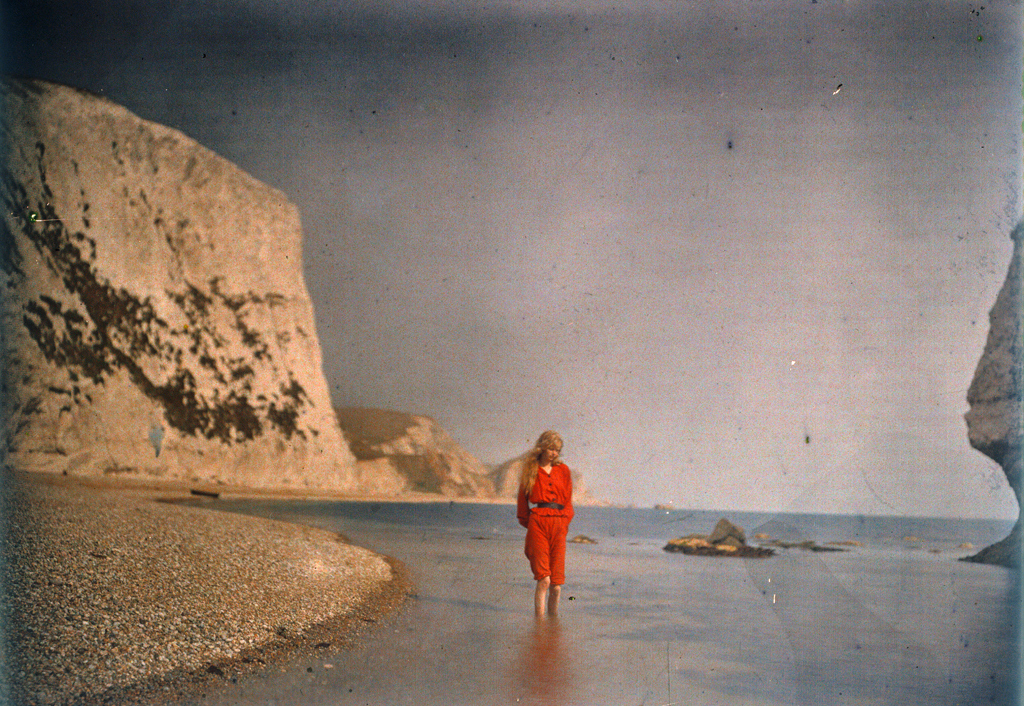
Christina in the water, 1913. Photo: Royal Photographic Society Collection
A Stranger
There is another reason why the work of the lieutenant-colonel remained of such interest — and that is the identity of his beautiful model.
This young woman is one of the first people in the world to be captured by color photography. However, for a century the only piece of credible information about her was that her name was Christina — that was what O’Gorman wrote in the captions to his photographs. For a long time it was supposed that she was his daughter, but there were no grounds for this version. Somebody must have just supposed this, and somebody else repeated it, and so people started perceiving this assumption as common knowledge.
Skeptics have pointed out the lack of documented information that Mervyn O’Gorman ever had any children. In addition, he was married to a woman 18 years his senior — at the time of the wedding Flora, O’Gorman’s wife, was 44 years old. Taking into account the time when they lived, it was unlikely that she was able to bear children.
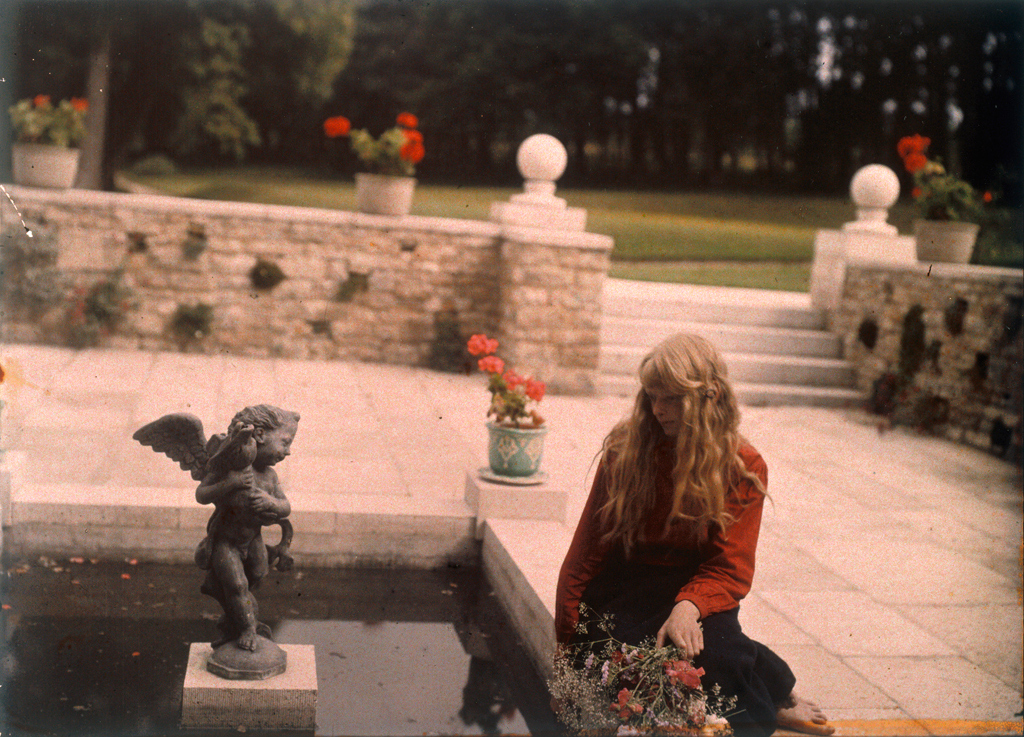
Christina by the pond, 1913. Photo: Royal Photographic Society Collection
Dotting the Is
O’Gorman’s model was successfully identified only several years ago thanks to the press and coincidence. After several of his works were displayed in the National Media Museum in Bradford, British newspapers wrote about the mysterious Christina. And then, a retired engineer Stephen Riddle, remembered about the collection of O’Gorman’s stereoscopic slides that he inherited from his father-in-law. After studying the slides, he discovered group photographs that were captioned as photographs of Edwyn and Daisy Bevan with daughters Anne and… Christina.
Riddle informed the abovementioned media museum that houses the collection of O’Gorman’s works that belong to the Royal Photographic Society about his findings. With the help of new materials, experts identified who the young woman with long, fair hair was.
Her name was Christina Elizabeth Frances Bevan, she was born in London on March 8, 1897. She was 16 at the time of the shoot. Christina’s father, a philosopher and a professor at King’s College London, Edwyn Robert Bevan, was a close friend of O’Gorman.
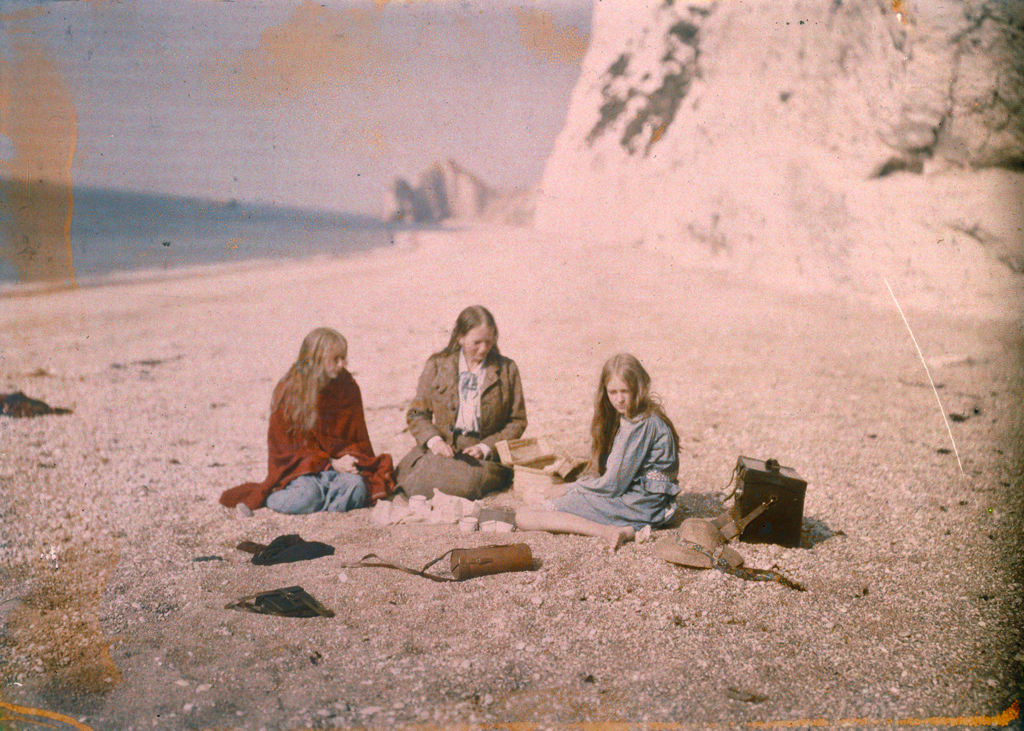
A picnic on the beach, 1913. Photo: Royal Photographic Society Collection
According to the Museum’s curator Colin Harding, the Bevans were neighbors of the O’Gormans in Chelsea, the families maintained a close friendship and would frequently spend vacations together. O’Gorman photographed Christina during the summer trip to Dorset county. The beach where some of the photographs were taken was identified as Lulworth Cove, one of the most beautiful spots on the British coast.
Still, nothing is known about the further destiny of O’Gorman’s model. According to the Peerage database of genealogical data, Christina died in 1981 at the age of 84. O’Gorman died at 86 in 1958 in London.
New and best




